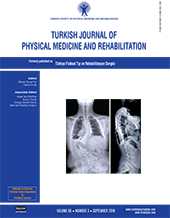Functionality of patients with post-stroke hemiplegia: Does serum folate level matter?
Patients and methods: Between January 2012 and March 2015, a total of 80 patients with hemiplegia (51 males, 29 females; mean age 60.3±13.2 years; range, 19 to 95 years) at least three months post-stroke were included in this study. Serum folate levels (ng/mL), Brunnstrom recovery stages of the lower limb, and Functional Ambulation Category (FAC) scores were recorded. All patients were divided into two groups according to the Brunnstrom stages (Category I; Stage 1-3 and Category II; Stage 4-6) and FAC scores (non-functional ambulatory; score 0-2, functional ambulatory; score 3-5).
Results: The mean serum folate level of the patient group was 6.8±2.8 ng/mL. Serum folate levels differed significantly between the Brunnstrom categories with lower levels in patients with poorer motor recovery (Category I) (p=0.047). Folate levels were also lower in nonfunctional ambulatory patients than those in patients with functional ambulation (p=0.046).
Conclusion: Lower serum folate levels are associated with poorer ambulation potential and impaired lower limb motor recovery in patients with post-stroke hemiplegia.
Keywords : Folate, folic acid, hemiplegia, post-stroke hemiplegia, stroke

















